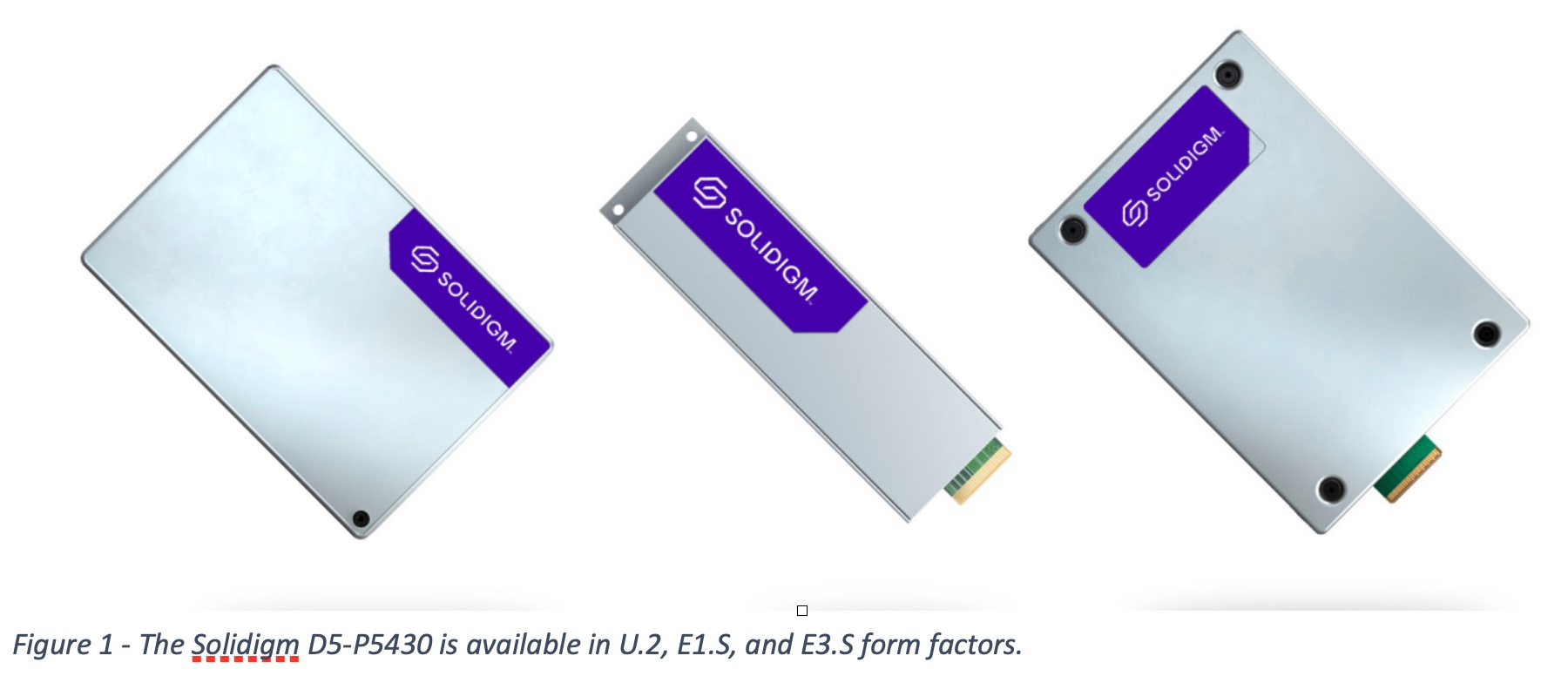Computational innovations in the past few years have revolutionized data processing, with modern applications ingesting and processing astounding quantities of data. Be it life sciences, electronic design automation, fundamental research, or machine learning, these modern workloads rely on massive datasets that require scalable and resilient storage. Let’s explore how storage solutions using QLC SSDs can support these use cases, with a focus on Solidigm’s latest D5-P5430 QLC SSD drive.
QLC Flash: More than Meets the Eye
Finding the ideal flash media that delivers the trifecta of performance, capacity, and resiliency at an affordable price point is a quest for holy grail that is doomed to fail. Organizations and hyperscalers must make difficult architectural choices to find the proper balance, and satisfy most of their needs.
Only TLC flash can deliver on steep throughput and latency requirements. However, the cost of TLC flash makes it unsuitable for cost-efficient deployment at scale, reserving it only for mission-critical, performance-oriented workloads, and production-grade storage tiers.
By contrast, unstoppable data growth trends require more and more capacity. Data is no longer just created by humans, but also IoT sensors, and all sorts of telemetry data.
QLC SSDs have a star role to play in this data-driven world. At multi-petabyte scale, QLC flash is the only media capable of providing sufficient capacity with acceptable latency and throughput. Turned away in the past due to poor performance and low reliability claims, vendors have worked hard to improve reliability, throughput, and latency characteristics of these drives.
QLC at Scale: Introducing the Solidigm D5-P5430
The Solidigm D5-P5430 is an enterprise grade, capacity-dense PCIe 4.0 NVMe QLC SSD drive that aptly balances performance and reliability requirements. Available in E.3S, E1.S and U.2 form factors, the D5-P5430 offers TLC-level performance for mainstream, read-intensive workloads, with QLC economics and massive lifetime writes.
Based on 192-layer, 3D QLC NAND offers a PCIe 4.0 x4 interface that is compatible with the NVMe 1.4c specification.

It has a drive endurance of up to 0.58 DWPD (Disk Writes Per Day), with a maximum of 32 PBW (32 Petabyte writes total). This makes an ideal foundation for massive data repositories with a read-oriented profile, i.e., datasets that are often accessed as a data source to perform computational activities. Examples include but are not limited to raw data sources for pharmaceutical research, medical imagery, etc.
Additionally, the drive supports the OCP 2.0 specification, making it ideal for hyperscaler-based open compute architectures.
The Solidigm D5-P5430 QLC SSD is currently available in 3.84, 7.68, and 15.36 TB raw capacities, and is soon to be available in a 30.72 TB version.

Conclusion
The Solidigm D5-P5430 QLC SSD drive establishes a new milestone for QLC flash. Its massive improvements in endurance and capacity demonstrate that QLC flash is the new normal in mainstream, read-intensive workloads. Clearly aimed at large datacenters and hyperscalers where storage density, outstanding reliability, and low cost per GB are key factors, the D5-P5430 QLC SSDs is a key enabler to even more robust and massively scalable data stores, allowing better energy efficiency and storage density.
For more information on the Solidigm D5-P5430 QLC SSD, be sure to check out these –Composing a Harmonized Infrastructure with Solidigm and Supermicro, and Solidigm and Supermicro Help Organizations Achieve Three Goals of Infrastructure Sustainability
Additionally, a must-watch is the Gestalt IT Tech Talks Roundtable featuring Solidigm’s D5-P5430 and SuperMicro’s new server chassis (supporting the EDSFF E.3S form factor) that deep dives into the benefits, use cases, and synergies between the two vendors.
To learn more, visit the Solidigm D5-P5430 product page, and do not hesitate to contact Solidigm for a demo.

